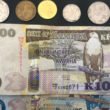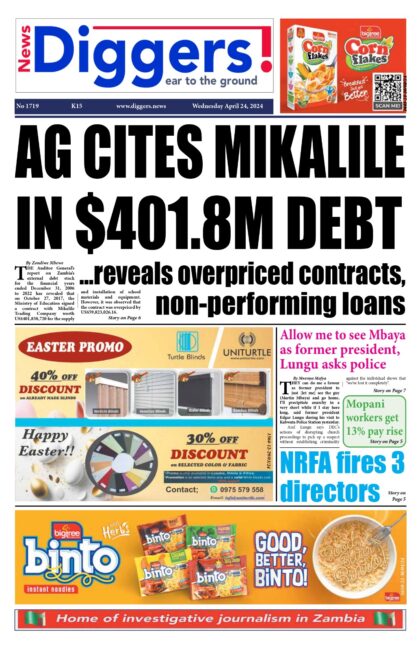The kwacha is starting to appreciate partly owing to Finance Minister Margaret Mwanakatwe’s regular disclosure of market sensitive information in a timely manner, says economist Chibamba Kanyama.
By the end of the first week of February, the kwacha had been bullish against the US dollar, now trading below K11.90 per dollar for the first time this year.
The local currency had marginally appreciated against the greenback on account of positive sentiment from news that the government would target an IMF deal by the end of the year, resulting in the local unit gaining to close at K11.84 per dollar on the offer, FNB’s daily treasury newsletter stated, Friday.
Responding to a press query, Kanyama stated that the timely disclosure of market-sensitive information by Mwanakatwe had noticeably raised optimism in investors, a situation that had begun to stabilise the local currency.
“…There has, however, been one significant positive development on the part of the Zambian economy: The Minister of Finance has lately been much more proactive in information and data disclosure as well as fiscal discipline, a stance the market is beginning to appreciate. Information disclosure is important because at the time the (Euro)bond broke the 13 percent yield rate barrier in May (2018), most investors were reacting to lack of information disclosure; and at the time; the Ministry of Finance website was down raising suspicions the government was concealing data; and that was the same period the investors had expected Finance Minister Margaret Mwanakatwe to be on a road show in London. However, since August, 2018, the Minister has been flooding the market with available data and this can have some positive impact on subduing negative sentiment and calming the market,” Kanyama noted.
He explained that investor confidence was slowing returning, helping the kwacha make a come back.
“What’s likely happening with the Zambian kwacha is that there are investors who believe it cannot continue losing any more and are now cashing in hence its relative super performance,” he observed.
And commenting on the rise of Zambia’s positive Eurobond performance where returns of over 10 per cent were seen, Kanyama explained that Zambia’s sovereign bond had risen in the bonds market, partly due to foreign investors’ speculation and the United States’ recent economic activities.
According to Bloomberg, Zambia’s Eurobonds had a total return of 10.3 per cent last December, more than any other in 75 emerging markets.
“The Southern African copper producer’s dollar debt has made a total return of 10.3 per cent since the end of December, more than any of the other 75 nations in the Bloomberg Barclays Emerging Markets USD Sovereign Bond Index,” a Bloomberg report stated.
“The super performance of the Zambian sovereign bond on the global exchange for traded funds is in part due to an investment cycle associated with such securities and this may have been exacerbated by the recent developments in the USA where appetite for equities shifted drastically owing to FedRate hike (in December); USA-China tensions and the seeming strengthening of the USA dollar. Fund managers generally do not hold funds in a safe or fixed deposit account when one asset is experiencing volatilities or uncertainty; they look for other opportunities. When one asset loses, another shows prospects; in other words, asset classes rarely get exposed to similar risks at the same time and this has somewhat induced appetite for the Zambian bond for the most bullish investors,” stated Kanyama.
“Another investment rule is to track underperforming assets because when it gets worse, it can only get better, hence certain investors sale or buy to maximise on wider spreads but this can only last as long. It works the same way as speculative foreign currency traders who will keep holding on the dollar hoping the local currency will keep losing value, but when they observe the currency may no longer continue losing value, they quickly dump the foreign currency to maximise gains. My assessment is based on the fact that there have been no underlying or fundamental market developments to induce a sustainable appetite for the Zambian bond except for the subsidizing negative sentiment. All other factors that can affect the quality of the asset have more or less remained as they were at the time the bond was worst performing: the external debt has not reduced to mitigate country risk on possible default though this looks very unlikely; the foreign reserves have remained at below two months of import cover; the IMF programme is still a pipedream; unless I missed it, there has not been latest ratings by the rating agencies (Standard & Poor’s, Moody’s and Fitch) about Zambian creditworthiness; the fiscal deficit is still above target and the budget for 2019 is still to have a complete approval when the Sales Tax is introduced in April.”











